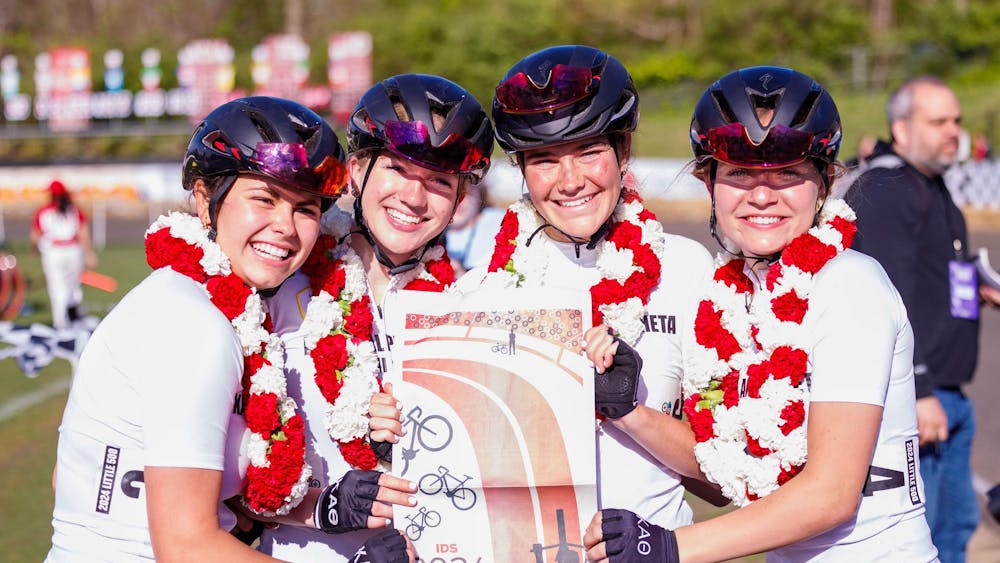In a race that often comes down to fractions of a second, Little 500 competitors are always looking to pick up precious time on the track.
One of the more dramatic ways teams shave time is during the rider exchanges. It’s one of the most dangerous parts of the race, with riders jumping on and off the bikes while at the same time trying not to fall behind competitors who are racing by.
An exchange done properly can keep a team out front and in contention.
A poor exchange can leave riders falling on the ground and prove detrimental to a team’s hopes of winning.
“The exchanges are crazy,” Delta Upsilon rider Robert Martin said. “Every team does it differently, but it’s all about getting in and getting out fast.”
The first step to the exchange is getting out of the pack.
The rider on the bike will exchange signals with his or her team that they are coming in. During this time, the rider on track has to navigate his or her way to the outside of the peloton.
This can often be the most difficult part of the exchange process. If the trailing riders aren’t paying close enough attention, the rider trying to get out of the pack risks getting hit from behind, causing an accident.
Once the rider steers his or her way to the outside of the pack, the exchange begins.
The rider on track makes a break to the outside of the cinder track in Bill Armstrong Stadium to begin what is called a burnout lap. During the burnout lap, the rider will try to use all of his or her remaining energy to sprint away from the peloton.
The goal of the burnout lap is to build a gap between the rider and the peloton, so the time lost during the exchange doesn’t cause the team to lose the draft.
“The big difference is getting your burnouts,” Phi Kappa Psi rider Will Beaty said. “Getting that whole game set and being able to have a good exchange makes a difference.”
When the rider on the bike closes in on his pit box, a foot race begins for the second rider, who needs to catch the bike as his or her teammate jumps off.
As the second rider tries to find his or her footing on the pedals, he or she quickly tries to gain his or her balance while trying to pick up speed as quickly as possible as he or she rejoins the peloton.
“There’s a lot of trust in it,” Martin said. “Once you finally get it, you’re not done because then you balance yourself and you think of your next move
on the track.”
The art of the exchange
Get stories like this in your inbox
Subscribe





